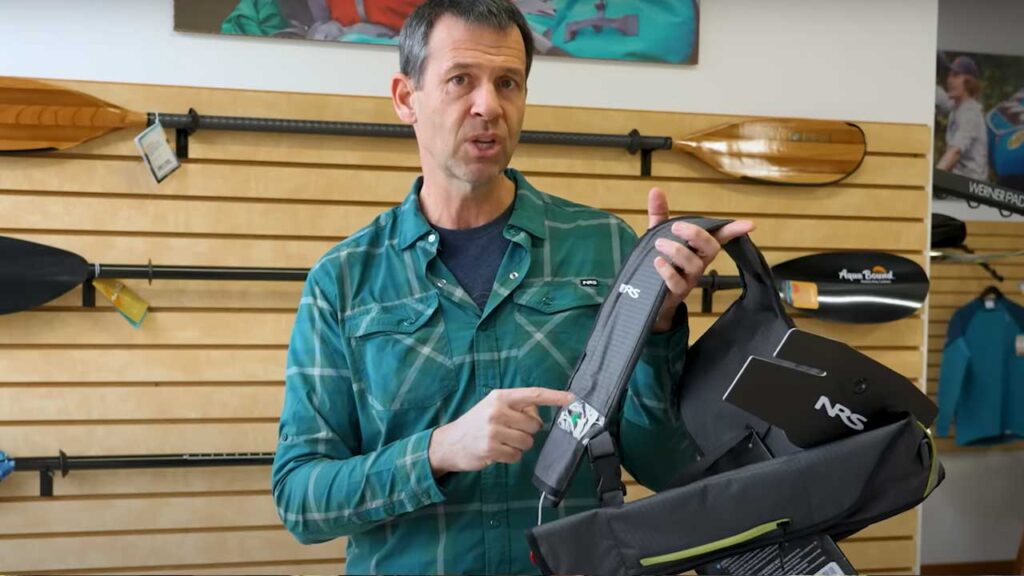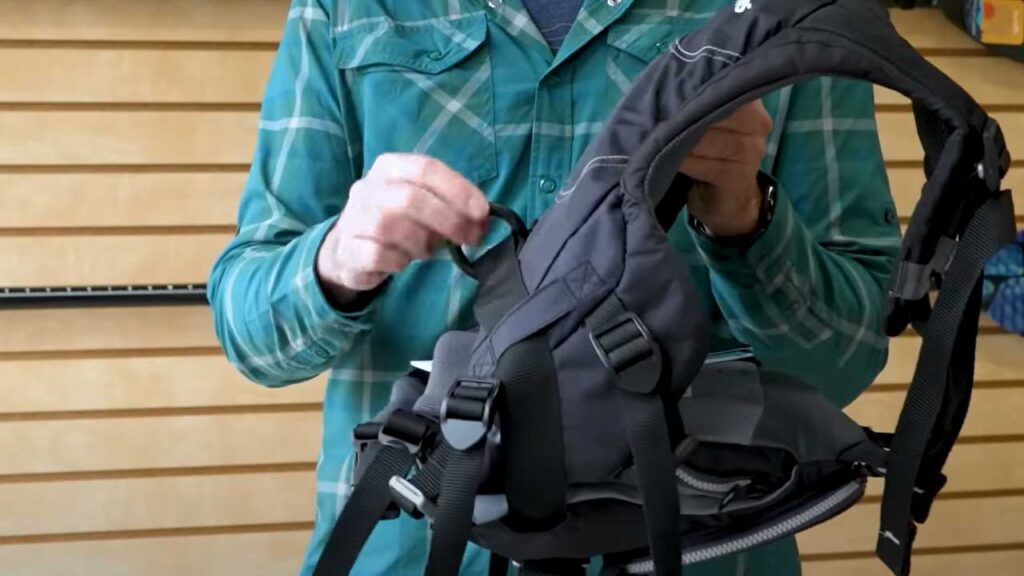Wearing a correctly fitted life jacket or personal flotation device (PFD) when kayaking or canoeing is as essential as wearing a seat belt when driving. Nine times out of ten you won’t need it, but for the small percentage of times when things do go wrong you will be safe and prepared. How to Choose a Life Jacket will be mostly up to, what you're doing and your comfort.
In fact, wearing a life jacket when operating a kayak, a canoe, a stand-up paddleboard, or any other small personal watercraft, is required by law. Wearing a correctly fitted and comfortable life jacket is just a smart thing to do.
But how do you choose the right life jacket for you? Well, keep reading to find out exactly how to choose a life jacket for your next kayaking and canoeing adventure.

Which Types of Life Jacket Are Available?
There are a few different decisions you will need to make when choosing to buy a new life jacket.
Life jackets are split up into three different types, types 1, 2, and 3.
Type 1 and type 2 life jackets are designed to float an unconscious person, keeping their head above the water. They tend to do this by having big collars behind the head to float it up, as well as a lot of flotation in the front to bring the belly up.
Type 3 life jackets don’t keep your head above the water and are more like swimming aids. This means that they have more flexibility in where the flotation around the body goes. They are therefore much more comfortable life jackets for kayaking or canoeing.
It is important however to remember that, whilst more comfortable, type 3 life jackets will not do the same thing as a type 1 or 2 life jacket. If you are unconscious they might not keep your head above the water.

How to Choose a Life Jacket: Inflatable or Standard Life Jackets?
You can choose between two main kinds of life jackets: an inflatable life jacket or a standard life jacket.
Inflatable Life Jackets
Inflatable life jackets have a Co2 cartridge inside the jacket that will automatically inflate when it touches the water. They function a little bit like the airbags inside a vehicle. You can also manually fill these life jackets up, or top them up, if necessary.
The big pro of inflatable PFDs is that they are small, light, and very low profile. They cover much less of your body so are a lot cooler in warmer environments. All of this means that they are very comfortable to wear.

However, to go back to the airbag analogy, kayaking with an inflatable life jacket is much like driving a vehicle without a seat belt and relying fully on the airbag. It does provide protection, but, particularly with the manual inflatable life jackets, you do need to be conscious enough to fill this up when needed.
It is also possible that automatically inflating life jackets inflate at the wrong time. And as these life jackets are not designed to be easy to swim or kayak in when inflated, they could inhibit movement and make certain situations more dangerous.
To top that off, inflatable life jackets need maintenance. The co2 cartridge must be replaced every year.

Standard Life Jackets
Standard life jackets use foam rather than air to keep you floated. This means that they are much safer than inflatable life jackets as they are ready to go at any time. It’s like wearing a seat belt and using an airbag: double protection!
Standard life jackets can also have a variety of different, very useful features, such as pockets and different attachment points for things like radios. They are also low maintenance. As long as you don’t leave them wet in your bag, or let them sit out in the sun, they require very little maintenance and can last a long time.
For people in colder environments, standard life jackets can be an excellent extra layer of insulation. With all that foam wrapped around you, they can keep you warm. Obviously, in some environments, this might be considered a con, but you can choose life jackets with different ventilation and foam options, so you just need to choose a life jacket based on your needs.
There is really only one main con of using a standard life jacket, and that is comfort. But this is really only an issue if you are using a non-paddling specific PFD. If you choose the right paddling-specific PFD then there is no real reason why this shouldn’t be as comfortable as an inflatable life jacket.

Which One Should You Choose?
In general, standard life jackets are the preferred type of life jacket for kayakers and canoeists. This is particularly the case for kayakers who will be kayaking in rougher water, with more chance of capsizing and other accidents. Standard life jackets are just safer, and on top of that, they provide some very useful storage features. You can take a snack and sun cream on the go with you!
However, inflatable PFDs can be the ideal choice for some kayakers. For example, people living in hot climates might benefit from an inflatable life jacket as it really does keep you cooler. People who will be paddling mostly on very calm water in very stable boats, where the chance of capsizing is very, very low, such as kayak anglers, might also choose to use an inflatable life jacket.
How to Choose the Right Standard Life Jacket for You
When choosing a standard PFD there are two main things to look out for:
1. How Comfortable Is It?
Your life jacket must be comfortable. If it is not you will be more inclined to take it off and less likely to wear it. You also don’t want to get unnecessary chafing or have your movement impeded by your PFD.

2. How Does It Fit?
How do you know if it fits well? Like a properly fitted pair of running shoes, a life jacket should be snug but comfortable.
Life jackets are fitted using strap systems that let you tighten or loosen the life jacket to fit you properly. Paddling-specific life jackets tend to be fitted with shoulder straps to accommodate different lengths of bodies, and side straps to fit different body shapes.
Paddling-specific life jackets don’t tend to have crotch straps. These are necessary on a lot of standard life jackets to stop them from coming off over your head when you are in the water. Paddling-specific life jackets avoid needing these by using good quality side straps. This way the life jacket hugs your body firmly and can’t come over your head anyway.

What Other Features Should You Consider?
How They Zip Up
There are many different life jacket designs, some zip up the front, or the side, and some don’t have any zips at all. There is no right and wrong here, the design you choose is simply a matter of personal preference.
The Back of the Life Jacket
The back of a standard life jacket can really vary, and this affects the comfort of your paddling experience.
Some life jackets have a mostly mesh back. This is ideal for someone using a recreational kayak, with a high back on the seat. You don’t want a layer of foam at the lower back getting in between you and the comfy seat in your kayak.

A more standard PFD has quite a bit more flotation across the entirety of the back. That is great for kayaks where you have a lower back support.
A third option is a thin back life jacket. This is more multi-functional as it is not too bulky, and spreads the foam evenly across your back. A thin back PFD is comfortable in a kayak with a high back seat, but also in a kayak with low back support. This is the jack-of-all-trades life jacket – comfortable in any boat you use.

A Rescue Life Jacket
A more advanced type of life jacket is the rescue life jacket. This has a quick-release belt around the waist and an attachment that lets you tow. A rescue life jacket is ideal for guides who may need to tow somebody mid-trip. For example, this can be a very useful tool when you are whitewater kayaking. If someone has taken a swim the guide is able to tow the empty boat back to the shore.

The quick-release belt is essential here because you need to be able to release the thing you are towing at a moment's notice. If you are being dragged somewhere you don’t want to go by boat you are towing all you need to do is press the quick-release buckle and you have avoided a potentially dangerous situation.

Kid’s Life Jackets
There are three levels of kid's life jackets. These are designed for:
– A child less than 30lb
– A child between 30 – 50lb.
– A child between 50-90lb.
After this children will need to use adult life jackets, albeit, very small adult life jackets!
When shopping for children's clothes it is always tempting to purchase something slightly bigger so that they have room to grow. But when purchasing a child’s life jacket you don’t want to mess around with the fit. And this is for the simple reason that an incorrectly fitter life jacket won’t do its job.
Women’s Specific Life Jackets
Women’s specific life jackets are more than just different colors to men’s life jackets. They have a different cut, made to suit a woman’s body. This doesn’t just add to the comfort of the PFD, it also helps it stay in place and ultimately makes it safer.
A Final Note
That is everything you need to know about choosing the right life jacket. If there is one piece of kayaking gear that you really should choose carefully and invest in, it is your PFD. Choosing the right life jacket makes a huge difference to your paddling experience, and most importantly to your safety out on the water.
Happy paddling!

PFDs/Life Jackets: NRS Zen PFD, NRS Chinook PFD (fishing), NRS Odyssey PFD (Touring and Rec), NRS Matik Inflatable Lifejacket, NRS Zoya Women's Lifejacket
Kayaks: Trak Kayaks, Perception Showdown 11.5
Paddles: Gearlab Outdoors IPIK, Aqua Bound Manta Ray Carbon 2-piece
Shirts and Tops: NRS Silkweight Short sleeved shirt, NRS Silkweight Long-Sleeve Shirt
Paddling Shorts: NRS Benny Board Shorts








